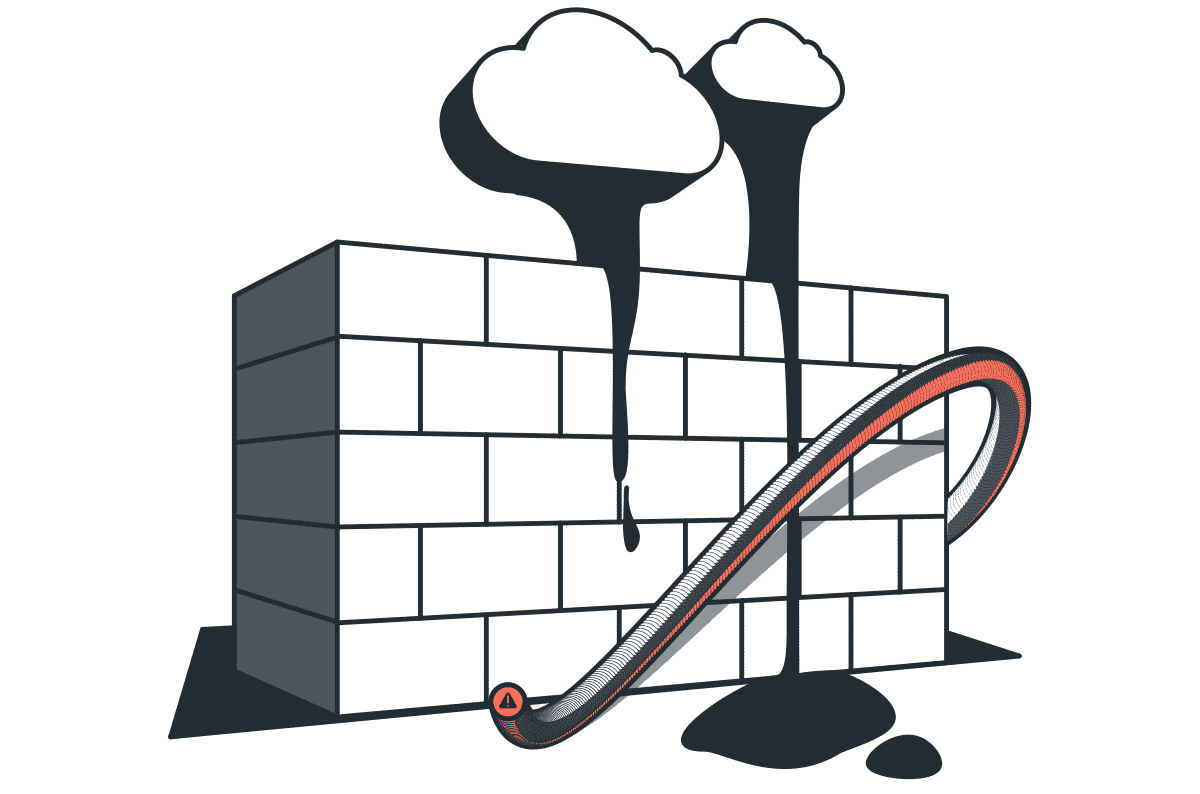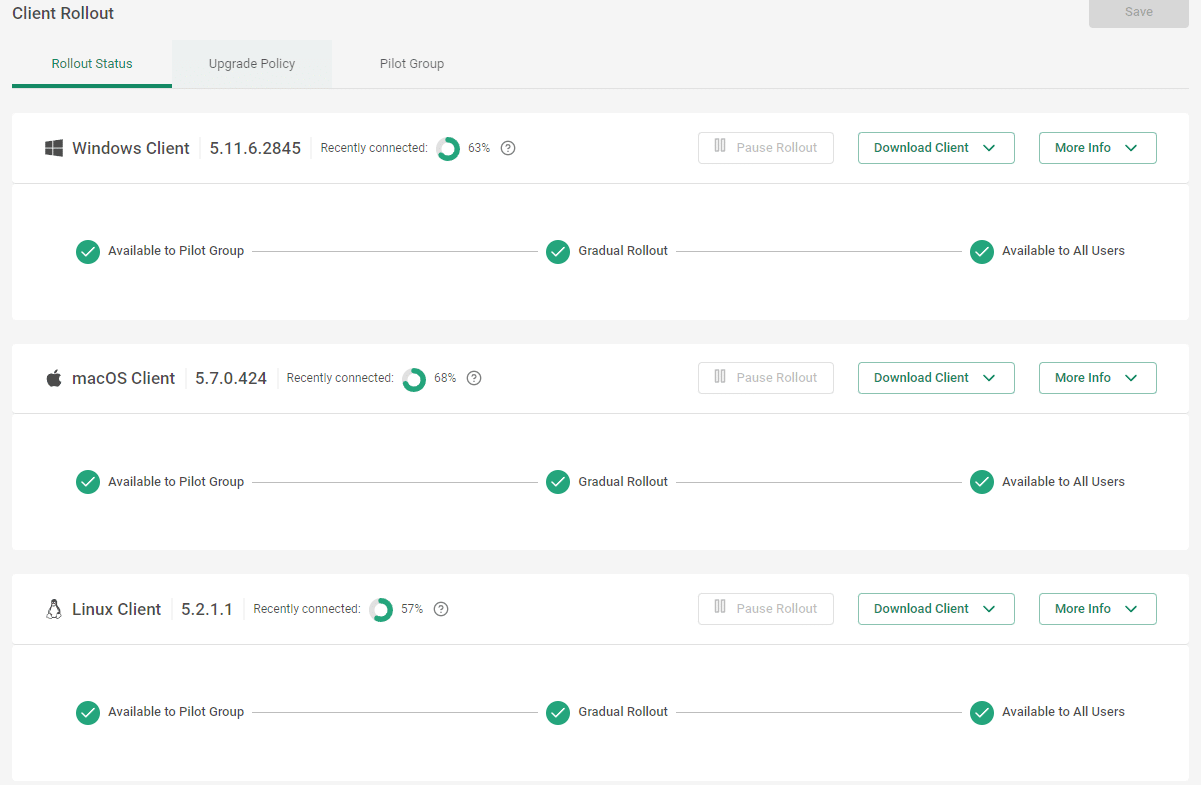Why Traditional NGFWs Fail to Meet Today’s Business Needs

|
Listen to post:
Getting your Trinity Audio player ready...
|
The modern business looks very different from that of even a few years ago. IT technologies have changed rapidly, and corporate networks are quickly becoming more distributed and complex. While this brings business benefits, it also creates significant challenges.
One of the biggest hurdles that companies face is ensuring that the evolution of their IT infrastructure does not outpace that of their security infrastructure. Many companies have spent significant time and resources designing and implementing security architectures around traditional next-generation firewalls (NGFWs) and other security solutions. Attempting to make evolving IT infrastructure work with these existing security deployments is a losing battle, as these solutions were designed for networks that are rapidly becoming a thing of the past.
The Modern Enterprise is Expanding
In recent years, enterprise IT infrastructures have evolved, driven by the pandemic, shifting business needs, and the introduction of new IT and security technologies. Some of the most significant recent changes in corporate IT infrastructure include:
Cloud Adoption
Nearly all companies have cloud-based infrastructure, and 89% have a multi-cloud deployment. This expansion into the cloud moves critical data and applications off-site and contributes to an increasingly distributed enterprise. Corporate WANs must be capable of efficiently and securely routing traffic between an organization’s various network segments.
Remote Work
The pandemic accelerated a transition to remote and hybrid work policies. With employees able to work from anywhere, corporate IT infrastructure must adapt to support them. Between remote work and the cloud, a growing percentage of corporate network traffic has no reason to pass through the headquarters network and its perimeter-based security solutions.
Branch Locations
In addition to the growth in remote work, companies may also be expanding to new branch locations. Like remote workers, the employees at these sites need high-performance connectivity to corporate resources hosted both in on-prem data centers and in the cloud.
Mobile Device Usage
With the growth of remote work has also come greater usage of mobile devices — both corporate and personally owned — for business purposes. Devices that may not be owned or controlled by the company may have access to sensitive corporate data or IT resources, making access management and traffic inspection critical for corporate security.
Internet of Things (IoT) Devices
IoT devices have the potential to increase an organization’s operational efficiency and ability to make data-driven decisions. However, these devices also have notoriously poor security, posing a significant threat to the security of corporate networks where they are deployed. Corporate IT architectures must be capable of limiting the risk posed by these devices, regardless of where they are deployed within the corporate WAN.
With the evolution of corporate networks, traditional LAN-focused security models are no longer effective. While protecting the corporate LAN is important, a growing percentage of an organization’s employees and devices are located outside of the traditional network perimeter. Defending cloud-based assets and remote workers with perimeter-based defenses is inefficient and hurts network performance and corporate productivity. As enterprise networks expand and grow more distributed, security architectures must be designed to protect the corporate WAN wherever it is.
Appliance-Based NGFWs Have Significant Limitations
Traditionally, most organizations have implemented perimeter-based defenses using appliance-based security solutions. If most or all of an organization’s IT infrastructure and employees are located on-site, then appliance-based security solutions can effectively meet the needs of the enterprise.
However, this description no longer fits most companies’ IT environments, making the traditional perimeter-focused and appliance-based security model a poor fit for organizations’ security needs. Some of the main limitations of appliance-based security solutions such as next-generation firewalls (NGFWs) include:
Coverage Limitations
NGFWs are designed to secure a protected network by inspecting and filtering traffic entering and leaving that network. To do so, they need to be deployed in line with all secured traffic flowing through them. This limits their effectiveness at securing the distributed enterprise as they must either be deployed at protected networks — which is increasingly unscalable with the growth of cloud deployments, remote work, and branch locations — or have all traffic rerouted to flow through them, which increases latency and harms network performance.
The Upside-Down World of Networking & Security | WebinarLimited Scalability
An appliance-based NGFW is limited by its hardware and has a maximum volume and rate of traffic that it can inspect and secure. As companies increasingly adopt cloud-based infrastructure, this creates challenges as cloud resources can rapidly scale to meet increased demand. Scaling an appliance-based security solution may require acquiring and deploying additional hardware, an expensive and time-consuming process that limits corporate agility.
Complex Management and Maintenance
To be effective, security solutions such as NGFWs must be tuned to address the security concerns of their deployment environments. As companies expand to include cloud-based infrastructure, remote work, and branch locations, they may need to protect a wide range of environments. The resulting array of security solutions and custom configurations makes security management complex and unscalable.
Traditional NGFWs were designed for corporate IT environments where an organization’s assets could be protected behind a defined perimeter and used infrastructure under the organization’s control. As corporate networks evolve and these assumptions become invalid, traditional NGFWs and similar perimeter-focused and appliance-based security solutions no longer meet the needs of the modern enterprise.
Redesigning the NGFW for the Modern Business
Businesses’ digital transformation initiatives and efforts to remain competitive in a changing marketplace have driven them to adopt new technologies. Increasingly, corporate assets are hosted in the cloud, and IT architectures are distributed.
Attempting to use traditional security solutions to secure the modern enterprise forces companies to make tradeoffs between network performance and security. As IT architecture moves to the cloud and becomes distributed, NGFWs and other corporate cybersecurity solutions should follow suit.
The evolution of the corporate network has driven the development of Secure Access Service Edge (SASE) solutions, which overcome the traditional limitations of NGFWs and integrate other key network and security functions. These cloud-based solutions provide various benefits to the organization, including:
- Global Reach: SASE cloud-native software is deployed in points of presence (PoPs) all over the world. This enables delivery of NGFW capabilities anywhere, minimizing the distance between on-prem, cloud-based, and remote devices and the nearest PoP.
- Improved Visibility: With SASE, all traffic traveling over the corporate WAN passes through at least one SASE PoP. This enables security inspection and policy enforcement and provides comprehensive visibility into corporate network traffic.
- Simplified Management: All SASE features are managed through a single pane of glass. This simplifies security monitoring and management, and enables unified and consistent enforcement.
- Security Integration: SASE PoPs consolidate numerous security and network capabilities into one coherent service, enabling greater optimization than standalone solutions.
- Scalable Security: SASE PoPs run cloud-native software. Scaling up to meet increasing demand happens elastically, without downtime, and without customer involvement. Enterprises no longer need to worry about mid-term hardware failure or refresh.
- Performance Optimization: Delivering security next to the user and the application instead of carrying user and application traffic into a central security stack reduces network latency, and improves user experience and productivity.
Cato Networks built the world’s first cloud-native, single-vendor SASE. The Cato SASE Cloud Is available from a private cloud of 75+ PoPs connected by dedicated, SLA-backed private global backbone. See the capabilities of Cato SASE Cloud for yourself by signing up for a free demo today.















